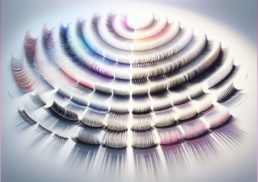In the ever-evolving world of skincare, azelaic acid has emerged as a versatile and effective solution for various skin concerns. This comprehensive guide will explore the ins and outs of this wonder ingredient, revealing its potential to transform your skin like never before.
Table of Contents
Short Summary
Azelaic acid is a natural, powerful ingredient suitable for all skin types with anti-inflammatory, antioxidant and exfoliating properties.
It can be used to treat acne, rosacea, hyperpigmentation and uneven skin tone.
Consult a dermatologist or skincare professional to determine the best product for your needs. Potential side effects should also be considered when using azelaic acid.
Understanding Azelaic Acid: A Closer Look

Azelaic acid is a naturally occurring dicarboxylic acid, derived from grains such as barley, wheat, and rye, or even lab-engineered bacteria to ensure purity and effectiveness. What makes this acid so special? Its impressive anti-inflammatory, antioxidant, and exfoliating properties make it a powerhouse ingredient for tackling a multitude of skin concerns. Suitable for all skin types, azelaic acid is generally well tolerated, even by those with sensitive skin.
The gentle nature of this acid, combined with its effectiveness, has led to the development of various topical azelaic acid products, such as the popular Paula’s Choice 10% Azelaic Acid Booster. So, if you’re looking to improve your skin’s tone and texture, it’s time to consider incorporating azelaic acid into your routine.
Azelaic Acid for Skin Conditions: Applications and Benefits
Azelaic acid’s unique properties make it an excellent choice for treating:
Acne
Rosacea, with rosacea azelaic acid being a popular treatment option
Hyperpigmentation
Uneven skin tone
Its mildness compared to other acids, like glycolic acid and salicylic acid, ensures that it remains gentle on the skin while still providing effective results.
So, whether you’re battling inflammatory acne or looking to treat acne by fading those stubborn dark spots, azelaic acid could be just the ingredient your skin needs.
Topical Azelaic Acid Treatments
With a variety of topical azelaic acid treatments available, such as creams, azelaic acid gel, and azelaic acid foam, it’s important to choose the right topical acne treatment for for your skin concerns and sensitivities. These treatments come in different concentrations, ranging from over-the-counter options with lower percentages to prescription-strength products containing up to 20% azelaic acid.
When selecting a topical azelaic acid product, consider your skin type and the specific issue you want to address. For instance, a higher concentration might be more suitable for severe acne or rosacea, whereas a lower concentration can be ideal for sensitive skin or mild acne.
Always consult a dermatologist or skincare professional if you’re unsure which product is the best fit for your needs.
Azelaic Acid vs. Other Acids: Comparing Effectiveness
While azelaic acid may not provide the same level of exfoliation as alpha hydroxy acids (AHAs) or beta hydroxy acids (BHAs), it offers unique benefits that make it a valuable addition to a comprehensive skincare routine. Studies have shown that azelaic acid works comparablely in efficacy to other acids, such as pyruvic acid, in treating mild to moderate acne, and it has also been proven effective against other skin conditions like melasma.
When incorporating azelaic acid into your skincare routine, it’s important to monitor your skin’s reaction, as some individuals may experience stinging, burning, or hyperpigmentation. If you’re considering using azelaic acid alongside other acids like glycolic acid or salicylic acid, consult a dermatologist to ensure you’re using the most effective combination for your skin type and concerns.
Azelaic Acid for Sensitive Skin
Azelaic acid has become a popular choice for those with sensitive skin thanks to its well tolerated and gentle nature. Its various benefits for sensitive skin types include reducing inflammation, calming irritation, improving skin tone, and treating acne. However, individuals with particularly sensitive skin should still exercise caution when using azelaic acid, as they may experience stinging, burning, and hyperpigmentation.
To minimize the risk of irritation, start by introducing azelaic acid to your skincare routine gradually and adjusting the frequency of use as needed. Additionally, it’s essential to use a gentle cleanser, moisturizer, and sunscreen alongside azelaic acid to achieve the best results while protecting and soothing your sensitive skin. To effectively use azelaic acid, always follow the product instructions and consult with a dermatologist if needed.
Incorporating Azelaic Acid into Your Skincare Routine

Incorporating azelaic acid into your skincare routine can be a game-changer for your skin’s health and appearance. By layering it with other products like hyaluronic acid and adjusting the frequency of use, you can maximize its benefits and achieve optimal results.
But how exactly do you incorporate azelaic acid into your existing skin care routine?, and what other products should you use alongside it?
Using Azelaic Acid with Retinol and Vitamin C
Azelaic acid can be used alongside other powerhouse skincare ingredients like retinol and vitamin C to address a multitude of skin concerns, from acne and hyperpigmentation to fine lines and wrinkles. The combination of these ingredients can help improve skin tone, texture, and clarity, while also providing additional benefits like increased collagen production and antioxidant protection.
However, when using azelaic acid with retinol and vitamin C, it’s crucial to monitor your skin’s reaction and consult a dermatologist if necessary. Some individuals may experience increased sensitivity, redness, or irritation when combining these potent ingredients, so it’s essential to introduce them gradually and adjust usage based on your skin’s tolerance.
Morning and Evening Use of Azelaic Acid
Azelaic acid can be incorporated into both your morning and evening skincare routines, depending on your specific needs and the products you’re using. In the morning, azelaic acid can help protect your skin from environmental stressors, while in the evening, it can work to repair and rejuvenate your skin as you sleep.
For over-the-counter products, using azelaic acid once or twice daily is generally recommended. If you’re using prescription-strength azelaic acid, follow the instructions provided by your prescriber.
Remember to always apply a broad-spectrum sunscreen during the day to protect your skin from harmful UV rays, as some azelaic acid products can increase your skin’s sensitivity to the sun.
Prescription vs. Over-the-Counter Azelaic Acid Products
When it comes to azelaic acid products, you’ll find both prescription and over-the-counter options available, each with their own advantages and considerations. Prescription azelaic acid products typically contain higher concentrations and may include additional active ingredients, such as tretinoin, to provide more potent results.
On the other hand, over-the-counter azelaic acid products are available in lower percentages and can be purchased without a prescription. These products may be more suitable for those with milder skin concerns or sensitive skin types.
Always consult a dermatologist or skincare professional to determine which type of azelaic acid product is best for your specific needs and skin concerns.
Potential Side Effects and Precautions
Azelaic acid is generally well tolerated, but it’s essential to be aware of potential side effects and precautions when using this ingredient. Some individuals, particularly those with sensitive skin, may experience stinging, burning, or hyperpigmentation. To minimize the risk of side effects, introduce azelaic acid gradually into your skincare routine and monitor your skin’s reaction.
It’s also crucial to avoid combining azelaic acid with other acids, such as:
AHAs
BHAs
Benzoyl peroxide
Hydroxy acids
This may lead to increased irritation or reduced effectiveness. If you experience severe symptoms or are unsure about combining azelaic acid with other skincare ingredients, consult a dermatologist for guidance.
Top Azelaic Acid Products in 2023: Dermatologist Recommendations
With numerous azelaic acid products on the market, it can be challenging to determine which one is best for your specific skin concerns. In 2023, dermatologists recommend a range of azelaic acid products that cater to different skin types and conditions, helping you achieve clearer, healthier, and more radiant skin.
Some of the top azelaic acid products in 2023 include serums and azelaic acid creams skin care products, formulated with additional active ingredients, such as retinol, vitamin C, and hyaluronic acid, to provide even more benefits for your skin. By choosing a product that aligns with your skin’s needs and concerns, you can harness the power of azelaic acid to transform your complexion.
Learn more, please visit Everything dermatologists want you to know about azelaic acid.
Summary
In conclusion, azelaic acid is a versatile and powerful skincare ingredient that can effectively address various skin concerns, from acne and rosacea to hyperpigmentation and uneven skin tone. By understanding its properties, incorporating it into your skincare routine, and choosing the right products for your skin type, you can unlock azelaic acid’s full potential and reveal your most radiant and healthy complexion yet.
Frequently Asked Questions
What does azelaic acid do for the skin?
Azelaic acid has anti-inflammatory and skin-calming benefits to reduce redness and even skin tone. It decreases hyperpigmentation, helping to even pores and improve overall pigmentation.
What should you not mix with azelaic acid?
It is not recommended to combine azelaic acid with other active ingredients such as retinoids, exfoliants and benzoyl peroxide.
Can you use azelaic acid everyday?
It is safe to use the azelaic acid cream every day, with some prescription-strength products designed for two times per day use. To reduce the risk of irritation, start by using it two or three times a week and then increase to daily use.
Is azelaic acid better than retinol?
Overall, azelaic acid is better than retinol due to its anti-inflammatory and bacterial properties, with fewer side effects such as dryness and photosensitivity.
What are the main benefits of using azelaic acid?
Azelaic acid has many beneficial properties, including anti-inflammatory, antioxidant, and exfoliating, which make it a great option for treating various skin disorders as acne, rosacea, hyperpigmentation, and uneven skin tone.
It can be used as a topical cream, gel, or foam, and is available over the counter or by prescription. It is generally well tolerated and has fewer side effects than other acne treatments. It is also suitable for all skin types, including sensitive skin.









